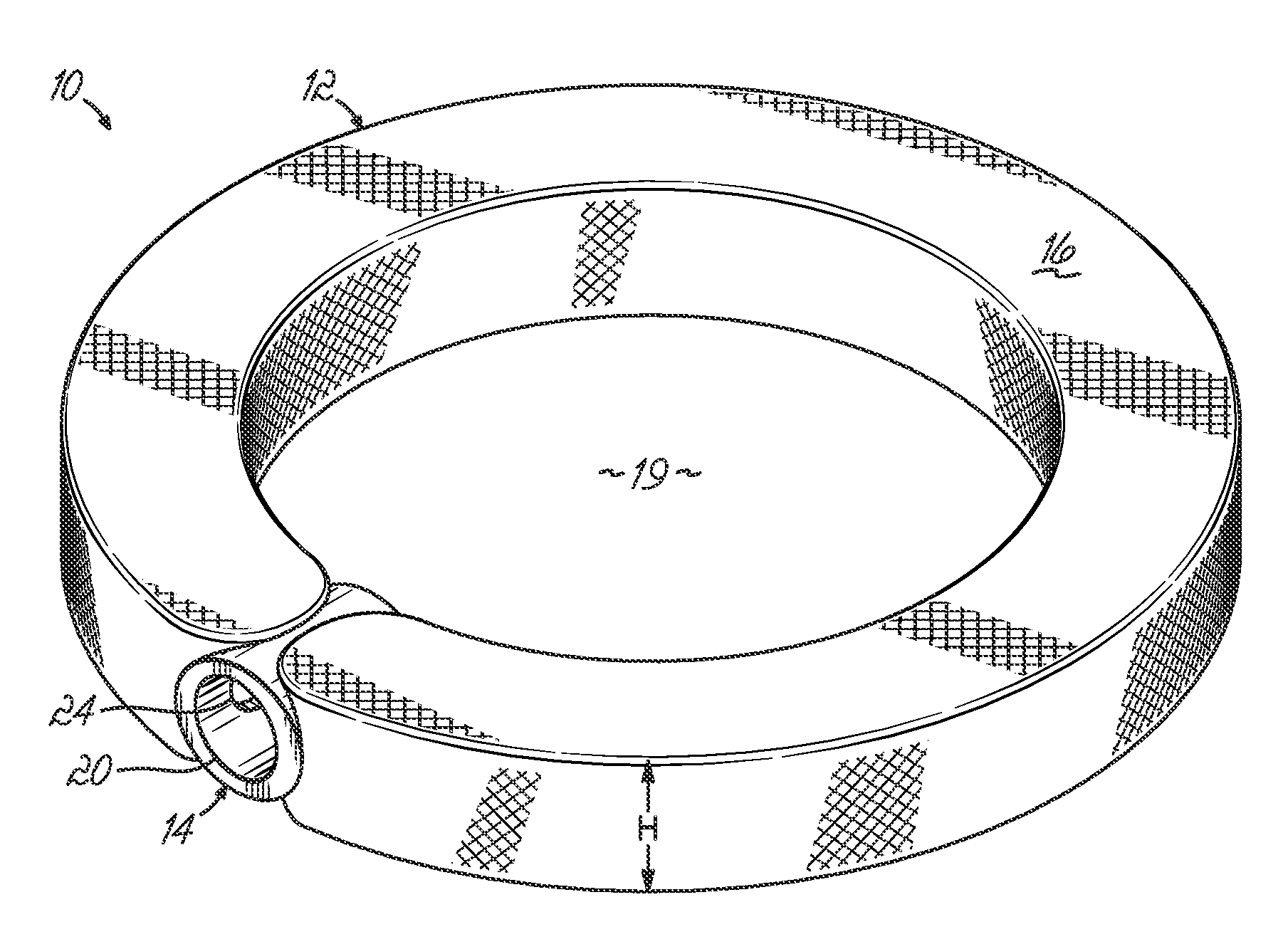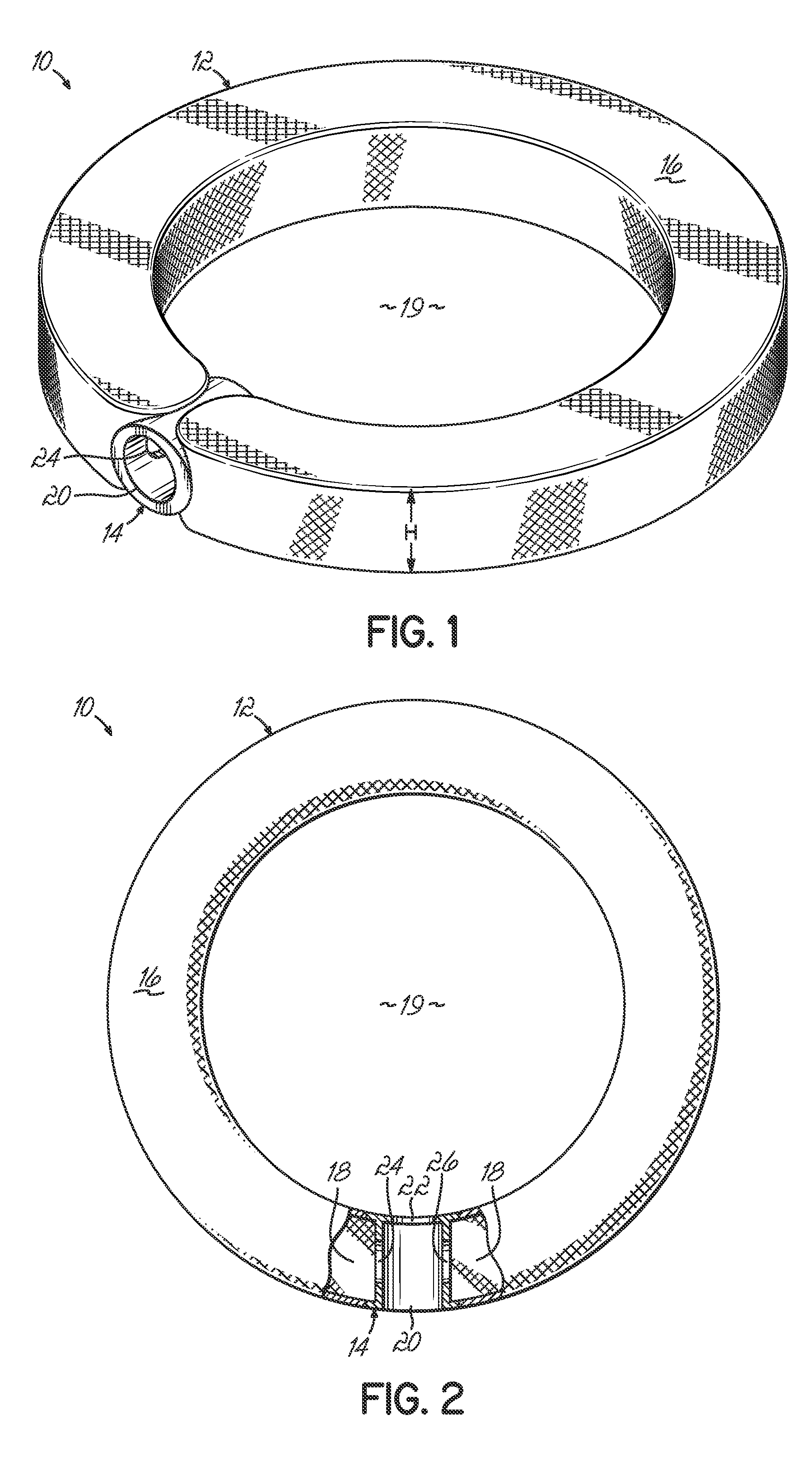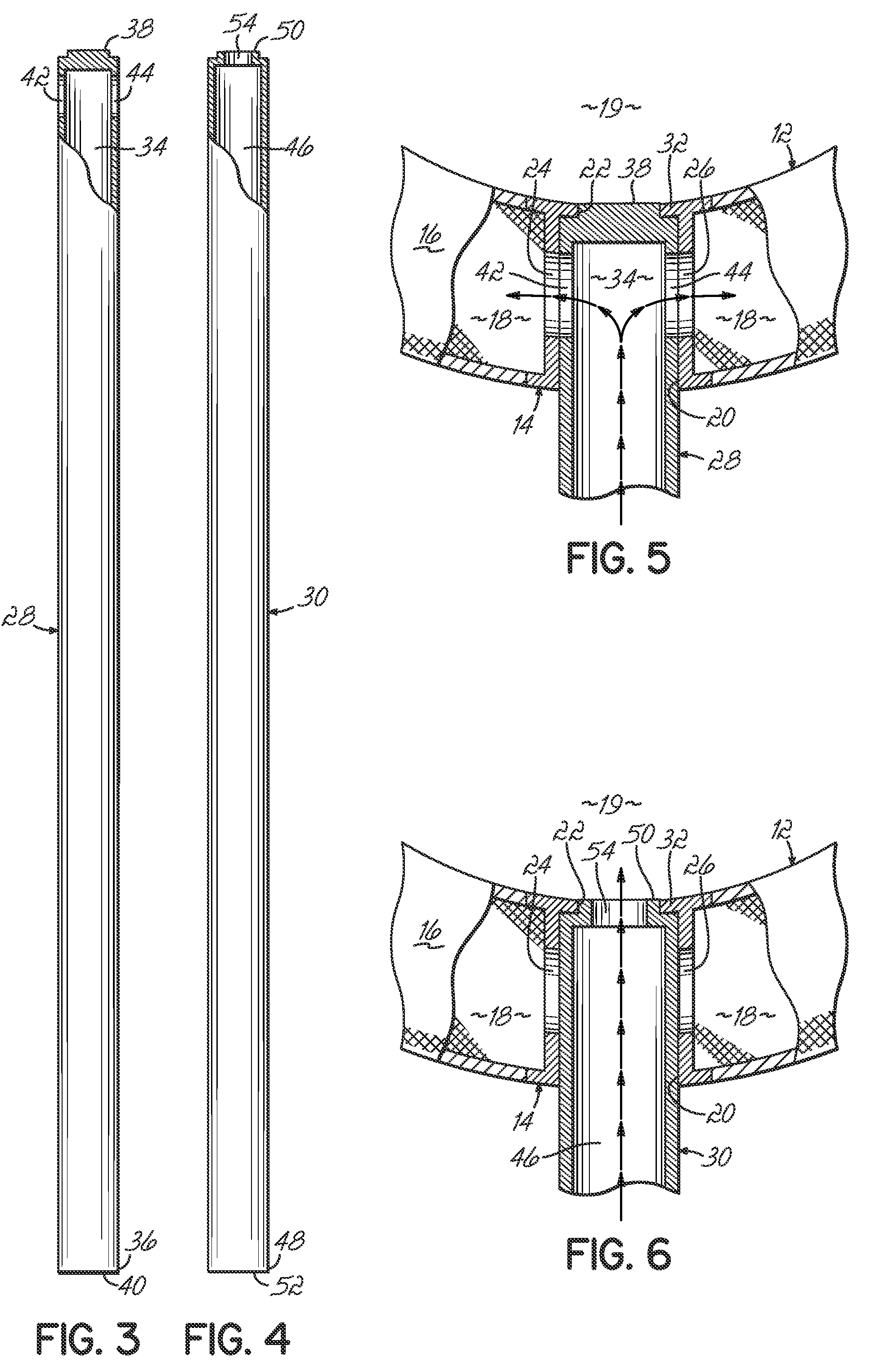Minimally invasive interbody device and method
a technology of interbody and spinal cord, which is applied in the field of orthopedic implants, can solve the problems of severe pain, radicular pain in the lower extremities, and pain in the lower extremities, and achieves the effects of reducing the risk of fractur
- Summary
- Abstract
- Description
- Claims
- Application Information
AI Technical Summary
Benefits of technology
Problems solved by technology
Method used
Image
Examples
Embodiment Construction
[0028]FIGS. 1 and 2 depict one embodiment of an interbody device 10 of the present invention. As shown, the interbody device 10 comprises a member 12 and a coupler 14. As will be discussed in detail later with reference to FIGS. 7-11, following a partial discectomy, the interbody device 10 is placed between adjacent vertebrae. Once placed, tubes (embodiments of which will be described herein) configured to removably cooperate with the coupler 14 may be used to fill the member 12 with material. In one embodiment, the interbody device 10 facilitates stabilization of a spine and also facilitates stabilization of adjacent vertebrae.
[0029]To that end, with reference once again to FIG. 1, the interbody device 10 with the member 12, shown in an expanded state, provides an anatomically contoured shape. While the interbody device 10 has a nearly ring-like perimeter, other shapes and configurations are possible. By way of example and not limitation, the interbody device 10 may be a customized...
PUM
| Property | Measurement | Unit |
|---|---|---|
| flexible | aaaaa | aaaaa |
| volume | aaaaa | aaaaa |
| internal volume | aaaaa | aaaaa |
Abstract
Description
Claims
Application Information
 Login to View More
Login to View More - R&D
- Intellectual Property
- Life Sciences
- Materials
- Tech Scout
- Unparalleled Data Quality
- Higher Quality Content
- 60% Fewer Hallucinations
Browse by: Latest US Patents, China's latest patents, Technical Efficacy Thesaurus, Application Domain, Technology Topic, Popular Technical Reports.
© 2025 PatSnap. All rights reserved.Legal|Privacy policy|Modern Slavery Act Transparency Statement|Sitemap|About US| Contact US: help@patsnap.com



